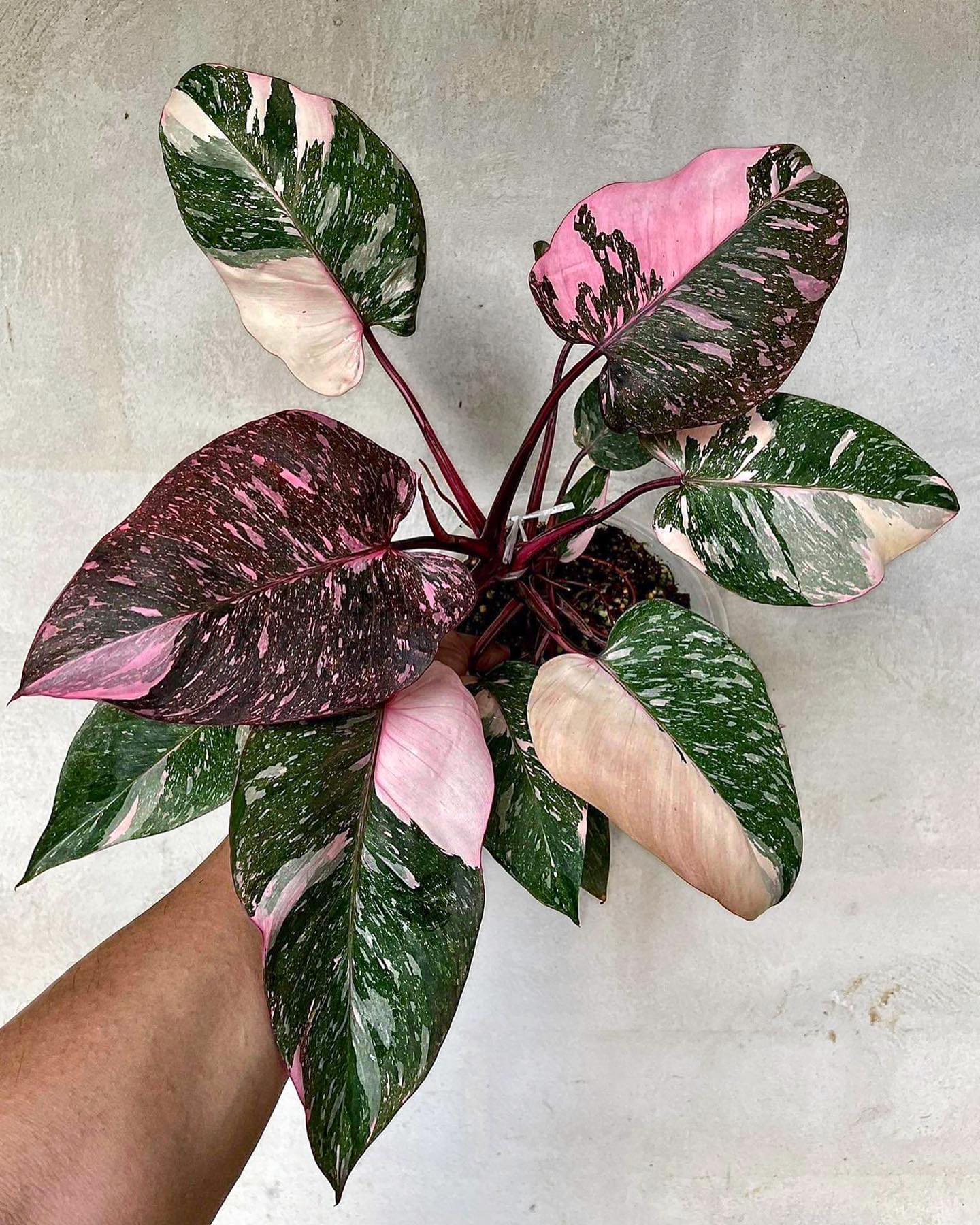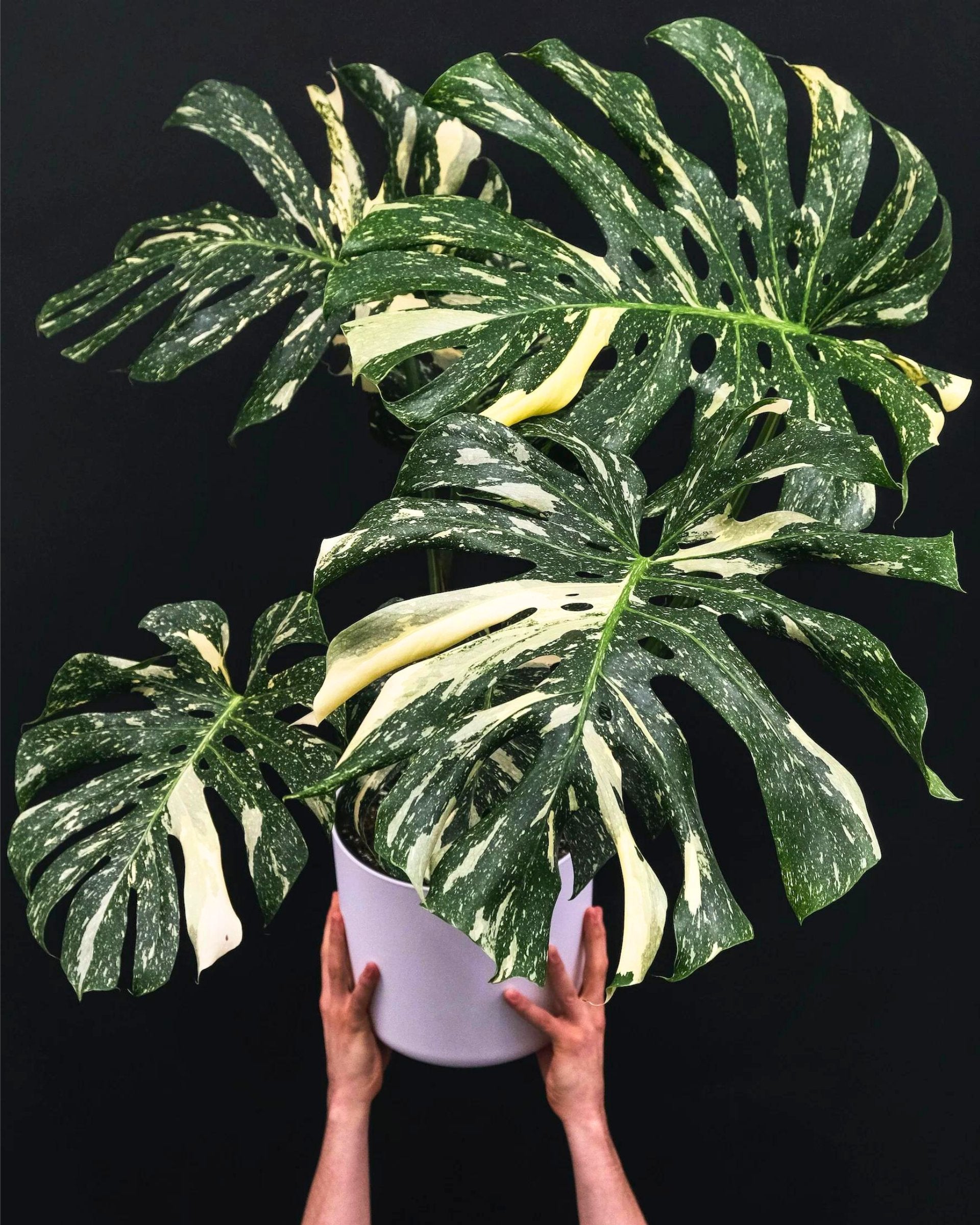Calathea Dottie (Roseopicta)
- Regular price
- $25.00
- Sale price
- $25.00
- Regular price
Description
Calathea roseopicta 'Dottie' is more than just a houseplant; it's a statement piece. With its deep green (almost black) leaves featuring vibrant pink stripes and rich burgundy undersides, this Brazilian rainforest native is a showstopper. Known for its unique appearance and relatively low-maintenance care requirements, Calathea Dottie is a perfect addition to any indoor space, adding a dash of color and elegance.
Ideal Conditions for Your Calathea Dottie
Light Requirements
Calathea Dottie thrives in medium to bright indirect light. Direct sunlight can harm this delicate prayer plant, causing its leaves to fade or even burn. Place it near a window where it can enjoy filtered light for the best results. Insufficient light can lead to smaller leaves and stunted growth, so make sure your plant gets the light it craves.
Soil Preferences
This prayer plant prefers well-draining soil. A mix of potting soil, peat, and perlite works wonders for Calathea roseopicta. Lighter soils like coir can also be used. It's crucial to avoid heavy, water-logged soils as they can lead to root rot.
Watering Guidelines
Calathea Dottie is somewhat finicky about water. It doesn't like too much or too little; it prefers its soil to be consistently moist. Use your finger to check the soil's moisture level before watering. Overwatering can lead to root rot, while underwatering can cause the leaves to dry out.
Humidity Needs
Being a tropical plant, Calathea Dottie loves humidity. This makes it an excellent choice for naturally humid areas of your home like bathrooms or kitchens. You can also maintain high humidity by misting the plant regularly.
Fertilization Tips
During its active growth stages, Calathea Dottie benefits from regular fertilization every two to three weeks. Both chemical and organic fertilizers work well. However, it's best to avoid fertilizing during winter months when the plant is dormant.
Common Issues and How to Address Them
Pest Problems
The most common pests affecting Calathea roseopicta are spider mites, followed by aphids and scale insects. Infestations can lead to yellow leaves and other visible damage. Insecticidal soap is an effective treatment for these pests.
Diseases to Watch Out For
Root rot is a common issue if the plant is overwatered or if the soil doesn't drain well. Another disease affecting Calathea Dottie is Pseudomonas Leaf Spot, which causes reddish-brown spots on the leaves. Removing affected leaves is the best way to manage this issue.
Pruning and Maintenance
Calathea Dottie doesn't require frequent pruning. Simply remove damaged or wilted leaves to help the plant focus its energy on new growth.
Propagation Tips
The best time to propagate your Calathea roseopicta is during the spring when the plant is in its active growth stage. Root division is the most effective method. Make sure to separate the plant carefully to avoid damaging the roots.
Potting and Repotting
Repotting should be done every two years or when the pot becomes root-bound. Choose a slightly larger pot to give your Calathea Dottie room to grow.
Conclusion
Calathea roseopicta 'Dottie' is a stunning prayer plant that can elevate the aesthetics of any indoor space. With its unique appearance and straightforward care requirements, it's a must-have for plant enthusiasts and novices alike. Follow this comprehensive guide to keep your Calathea Dottie healthy and thriving.
Weather Conditions
Please be mindful of the weather conditions in your area, as rare plants can be particularly vulnerable to cold temperatures especially during shipping. If the temperature drops below 50 degrees Fahrenheit in your location, we strongly advisepurchasing Winter Shipping Protection or consider purchasing the plant when weather is more suitable.
Click Here to add Winter Shipping Protection to your order.
Extreme cold can cause damage to plants during shipping, potentially leading to wilted or damaged foliage, root rot, or even death. While we take every precaution to carefully package and protect your plants during transit, we cannot guarantee their condition if they are exposed to freezing temperatures during delivery.
We recommend monitoring local weather forecasts closely and timing your plant orders accordingly. Additionally, consider providing a secure and sheltered location for package delivery to minimize exposure to cold temperatures upon arrival.
Please understand that while we strive to deliver the highest quality plants, factors beyond our control, such as inclement weather, may impact their condition during shipping.
Thank you for your understanding and cooperation in ensuring the safe arrival of your rare plants.
Shipping Information
Orders ship within 4-7 business days.
Please advise, shipping times can vary due to processing times and size of order.



